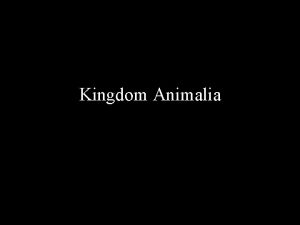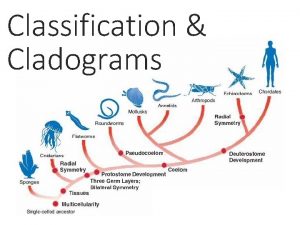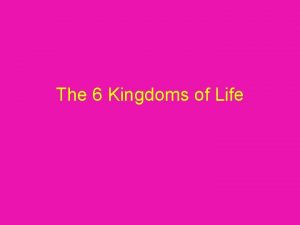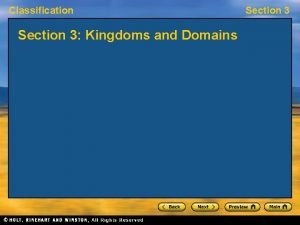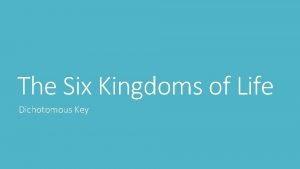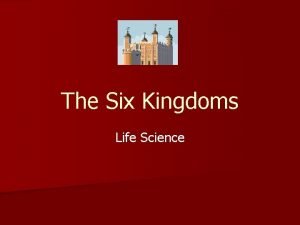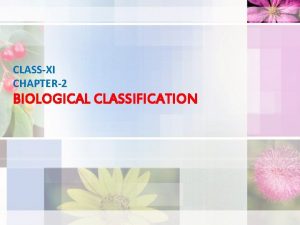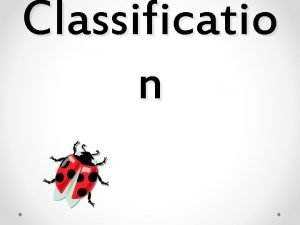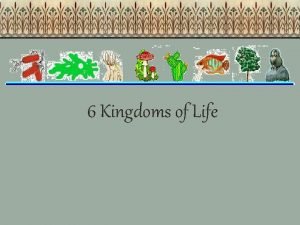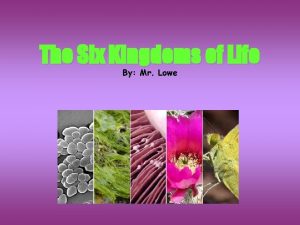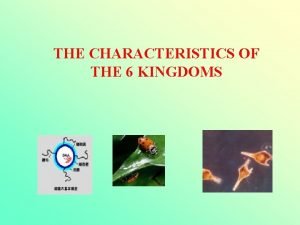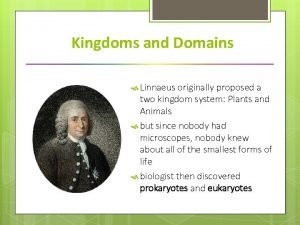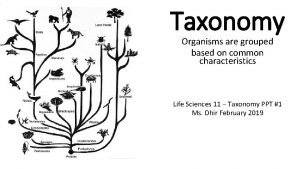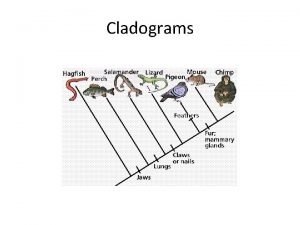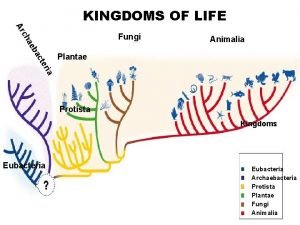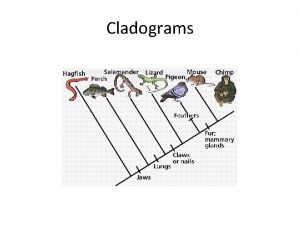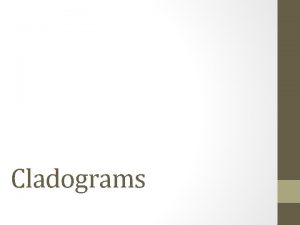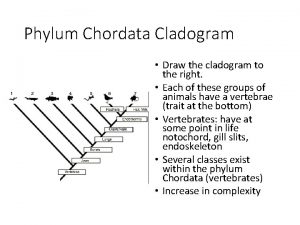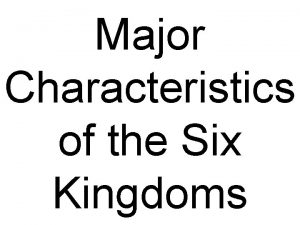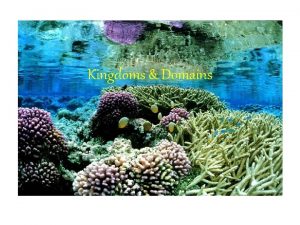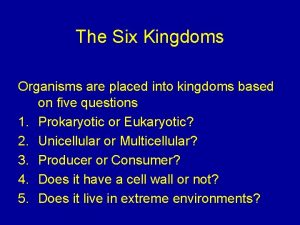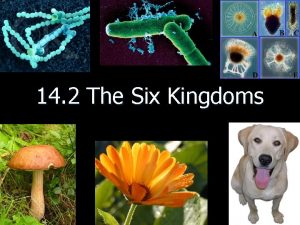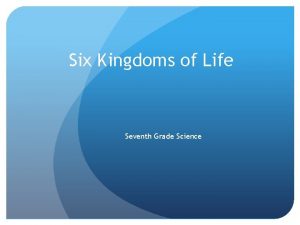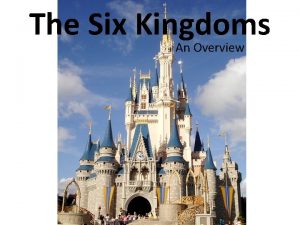KINGDOMS OF LIFEre Cladogram of Six Kingdoms and

















- Slides: 17

KINGDOMS OF LIFEre Cladogram of Six Kingdoms and Three Domains Fungi Animalia Plantae ia ter ac eb a ch Ar Section 18 -3 18 -13 Protista Kingdoms Eubacteria Archaebacteria Protista Plantae Fungi Animalia

Prokaryotes vs Eukaryotes • Pro = earlier, prior to, pre • Eu = good, true, think new

Vocabulary • Prokaryote – organisms with cell(s) that do not contain a nucleus (simple) • Eukaryote – organisms with cell(s) that have a nucleus (more complex) • Autotroph - organisms that make their own food • Heterotroph - organisms that ingest of absorb their food • Unicellular – organism consisting of only one cell • Multicellular – organism consisting of more than one cell

Kingdom Archaebacteria • • First life forms Prokaryotes (no nucleus) Unicellular Cell Walls Autotrophs (producers = make own food) Heterotrophs (need to eat others) Methanogens (producers - eat methane) Live in extreme environments (hot, cold, no oxygen) • Discovered in 1983

Kingdom Eubacteria • • Prokaryotes (no nucleus) Unicellular Cell wall Autotrophs (producers) or Heterotrophs (consumers, decomposers) • E-Coli, Staphylococcus aureus, Cyanobacteria

• The six-kingdom system • Bacteria • Archaea • Protista • Plantae • Fungi • Animalia • The OLD five-kingdom system • Monera • OLD • Protista • Plantae • Fungi • Animalia

Kingdom Protista • Eukaryotes (cells with nucleus and membrane-bound organelles) • Mostly unicelluar, but some multicellular (algae) • Cell wall • Autotrophs (producers) or Heterotrophs (consumers) • Amoebas, Paramecium, Slime molds, Algae (seaweed) • Animal-like, plant-like, fungus-like

Amoeba • Paramecium Slime mold Kelp (seaweed)

Kingdom Fungi • Eukaryotes (cells with nucleus and membrane-bound organelles) • Most multicellular; some unicellular • Cell wall • Heterotrophs – decomposers – consumers (yeast) • Mushrooms, yeast, molds

Mold Yeast

Kingdom Plantae • Eukaryotes (cells with nucleus and membrane-bound organelles) • • All multicellular Cell wall Autotrophs (Photosynthesis) - producers Mosses, ferns, flowering plants, conifers

Mosses Conifers (needles, cones) Ferns

Kingdom Animalia • Eukaryotes (cells with nucleus and membrane-bound organelles) • • All multicellular NO cell wall Heterotrophs (consumers) Sponges, jellyfish, coral, worms, starfish, clams, crabs, fishes, sharks, frogs, salamanders, lizards, turtles, birds, mammals

Coral Reef: sponges, coral (a type of sea anemone), fishes, zooplankton

Sponges, sea anemones, jellyfish, Worms, mussels, squid, octopus, shrimp, starfish, sea urchins. Fishes, amphibians, reptiles, birds, mammals


Organization of Life
 Cladogram kingdoms
Cladogram kingdoms Animalia eukaryotic
Animalia eukaryotic Cladogram of kingdoms
Cladogram of kingdoms The 6 kingdoms of life
The 6 kingdoms of life What are the three domains and six kingdoms?
What are the three domains and six kingdoms? Dichotomous key for 6 kingdoms
Dichotomous key for 6 kingdoms Kingdoms of life
Kingdoms of life Classification of pathogens
Classification of pathogens 8 classification levels
8 classification levels What are the kingdoms of living things
What are the kingdoms of living things 6 kingdoms characteristics
6 kingdoms characteristics What are the six kingdoms of life?
What are the six kingdoms of life? Animal kingdoms characteristics
Animal kingdoms characteristics Common characteristics of the six kingdoms of life
Common characteristics of the six kingdoms of life Characteristics of the six kingdoms
Characteristics of the six kingdoms Classify each polygon
Classify each polygon Phylogenetic tree amoeba sisters
Phylogenetic tree amoeba sisters A cladogram shows
A cladogram shows

